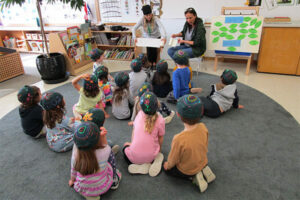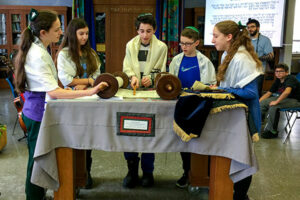The title of this week’s parshah – Vayeira — reads like a marquis announcing that: “God made an Appearance”. How God appears, and the human actions that welcome God’s appearance are the focus on the parshah. The parshah begins with Avraham sitting at the opening to his tent, where he “lifts up his eyes” to discover three messengers of God. The verse suggests that signs from God appear when we are at once restive, receptive, welcoming, and attentive. Notably, Avraham is recovering at this time from being circumcised, suggesting that times of healing are moments in which God makes an appearance. One of the divine guests delivers a message to Sarah that she will bear a son, despite her age. Sarah laughs with incredulity, and God responds to her laughter. Deep laughter that arises from hope for the impossible produces an appearance of God, and a promise of a child. Next, Avraham considers whether God will destroy the city of Sedom due to the social injustices being perpetrated there. Avraham approaches God in dialogue, asking God to act justly on behalf of the righteous people who might live there. Through this remarkable theological conversation God appears as a divine being concerned with justice. Later in the parshah, Hagar, Sarah’s surrogate, cries when she believes her son Ishmael will die of thirst in the desert. At the moment of her greatest despair, she “lifts up her voice and weeps,” an angel of God appears and shows her a well of water. A cry, a call, an exposure of vulnerability precedes the appearance of this sign.
The parshah teaches us that God appears in response to human action and human passion. God makes an appearance when we raise our eyes, argue for justice, call out for help. This Shabbat, may we all find our ways to welcome the appearance of God in our lives.
Shabbat Shalom,
Moreh Greg










